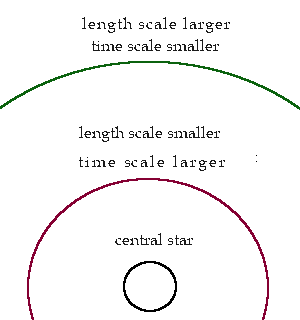Sufficient Explanation of Gravity

Assertion:
Assume this following statements are sufficient:
Knowledge of the gravitational redshift, constancy of the local speed of light.
Under these assumptions, a change in the length scale completely explains gravity.
Arguments:
Two planets are supposed to orbit a star. One further inward, the other further outward.
Their speeds are supposed to be factored out and play no role in this view.
On the inner planet, a light source is 550 nm, i.e., green. At the outer planet, the light arrives at 600 nm, orange.
One meter on the inner planet is 1.82 million wavelengths of light.
The wavelength of light expands when the light reaches the outer planet. This expands the length scale observed from the inner planet.
The length scale, meters, is enlarged there—as seen from the inner planet. A wooden ruler brought to the outer planet does not change.*
The number of wavelengths, measured at this meter, is only 1.67 million wavelengths.
However, since the speed of light has the same numerical value there, light travels faster when viewed from the inner planet.
The time scale appears shortened, in proportion to the wooden scale and the observed change in length scale.
The scales of time and space change continuously from orbit to orbit. Locally, the speed of light is the same everywhere.
If the relative (observed) speed of light decreases in one direction,
it acts like braking in a vehicle; inertia pushes masses in that direction. Gravity is therefore inertia, nothing more.
□
Note:
These scale changes depend on the observer's point of view. Locally,
the speed of light is the same everywhere. Therefore, there is no ether.
*It is no different from local scales there. Seen from the inner planet, it also appears enlarged.
"Seen," however, is more complex, since the broadening of the visual cone has a counteracting (diminishing) effect
and projects the outer circle further outward.
Further:
A massive object can only move at a speed less than light.
At every point along its path, there is a local system in which it can be seen at rest.
According to the "snow globe principle," local scales are the same everywhere.
Its dimensions therefore cannot change. Light is always in motion; a local system cannot be found there.
Ludwig Resch